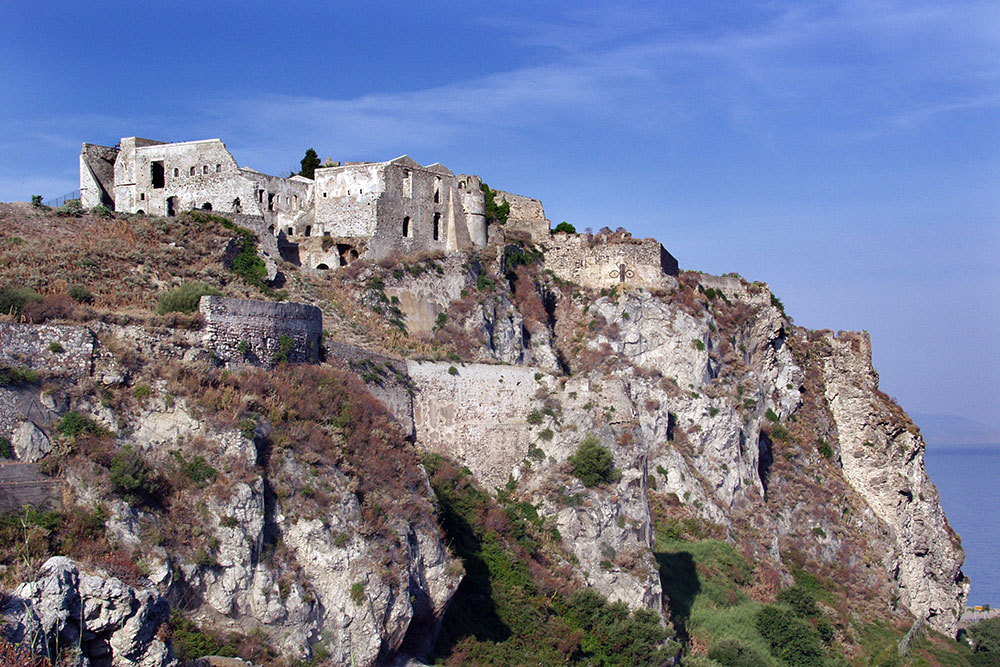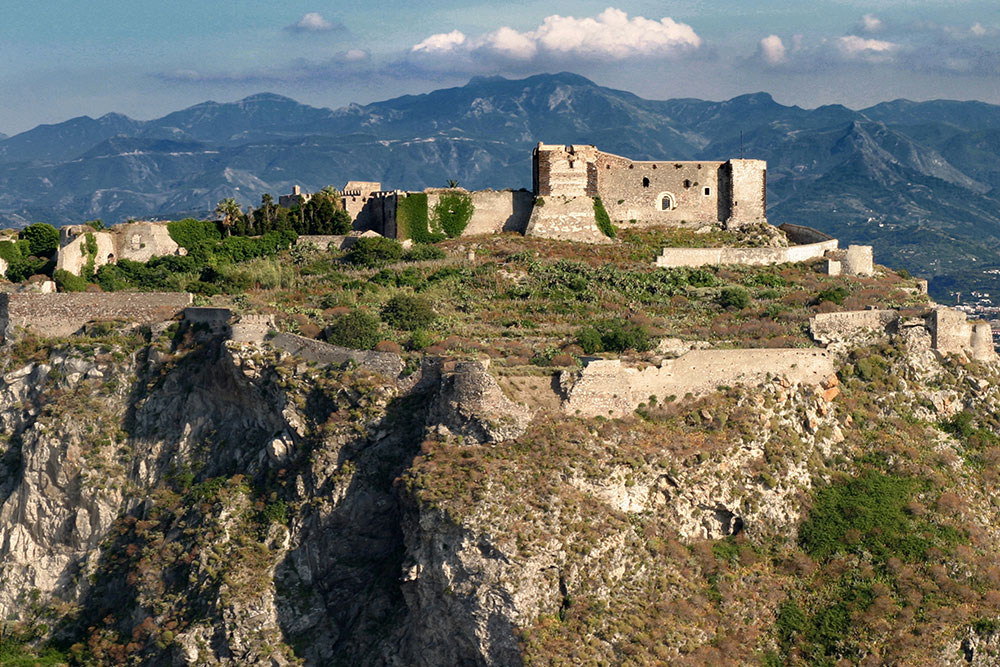0:00
/
0:00
Listen
The fortified citadel, commonly known as “Castle”, stands on the sites of early Greek, Roman, Byzantine and Arab settlements.
However, the continuity of life on the Castle, causing the destruction of the oldest testimonies, has not allowed to reconstruct in detail the stages of the site before the Norman conquest.
It was under the Normans, between the eleventh and thirteenth centuries, that the castle assumed not only the function of military defense but also that of reference point for the territorial organization of a vast area: dating back to the Norman era, in fact, the construction of the Mastio.
Under Frederick II of Swabia (13th century), thanks to the work of the architect Riccardo da Lentini, the fortification around the Mastio was enlarged.
In the fourteenth century, the Aragonese made some modifications to the castle. Under Alfonso the Magnanimous (XV sec.) there were further alterations, which led, at the end of the same century, thanks to Ferdinand the Catholic, to the creation of powerful walls (Cinta Aragonese) that incorporated the Federician structure.


The construction of the Spanish Wall began in 1525, during the reign of Charles V, under the viceroy Ettore Pignatelli. The Spanish walls definitively enclosed the old medieval town. In the area between the Aragonese walls and the Spanish walls, military, civil and religious buildings were built.
Inside the ramparts (in the south the Bastione di Santa Maria, built between the 16th and early 17th centuries; in the north the Bastione delle Isole, built in the 16th century) were made rooms to be used as warehouses and stables; numerous cisterns, distributed over several areas, They were used to supply water for both civilians and the military.
Meanwhile, perhaps already from the Aragonese era, an unstoppable exodus had begun outside the walls, in the direction of the village and the lower part of the city. The construction of the Duomo Antico, which was built inside the Spanish walls in 1608, as an attempt by the viceroys to stop the movement of the population towards the outside. The former Benedictine and Holy Saviour Monastery, whose construction began in 1616, is located on the site of other buildings whose use is unknown.
In 1778, according to the chronicles of the time, a fire, probably of malicious origin, destroyed the Town Hall that stood in front of the Old Cathedral. Following this episode, the civilian inhabitants left the citadel definitively.
In 1718 the Spaniards, having already lost most of their power, in an attempt to reconquer Sicily, besieged for 219 days Milazzo, causing a large number of victims, without obtaining the desired result. In 1734 began the Bourbon domination which, apart from a brief British parenthesis between 1806 and 1815, would last until 1860.
In 1860 Milazzo was the scene of the battle between Garibaldini and Borbonici; the clash ended with the removal of the Bourbon garrison installed inside the citadel.